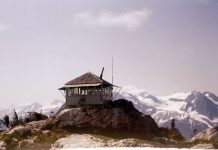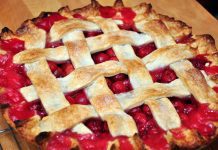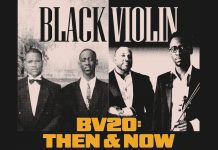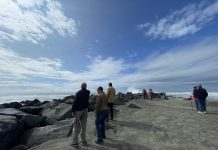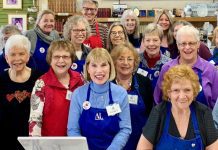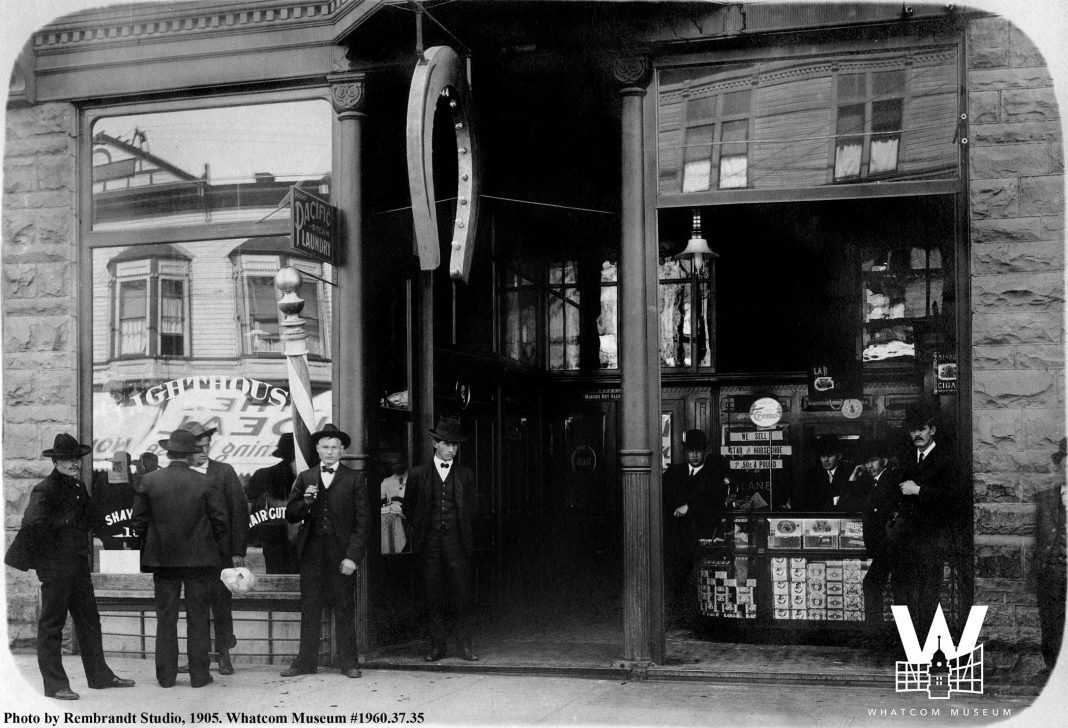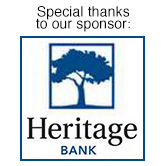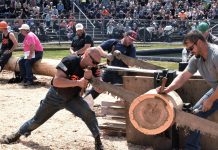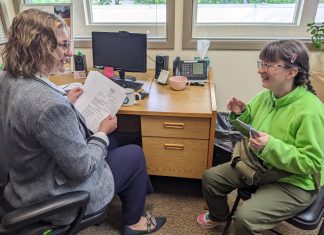In almost any downtown, time brings inevitable change: businesses come and go, buildings are remodeled or knocked down, and progress renders the present much different than the past.
But at 113 East Holly Street in downtown Bellingham, the Horseshoe Cafe has stood the test of time. It’s remained in the same place, with the same basic layout — and even some of the same décor — for nearly 66 years.
Along with its patented sidekick bar, the Ranch Room, perhaps no other Bellingham place can equally capture the city’s seedy and comforting sides better. For residents and visitors alike, the business embodies the nostalgic simplicity of the late-night diner and the raucous fun of the American saloon.
And like a hot cup of Horseshoe chili on a cold night, its history is worth digging into.
‘Since 1886‘
As the top of the iconic Horseshoe Café sign has proclaimed for decades, the business supposedly opened in 1886.
Local historians, however, have found that claim nearly impossible to verify.
Kolby LaBree, co-founder of Bellingham’s Good Time Girls historical walking tours, conducted research several years ago for the current owners, hoping to determine the ‘Shoe’s origins. The earliest confirmed mention LaBree found was an 1890 Bellingham Bay directory published in 1889. The Horseshoe Saloon is listed on Holly Street, with no specific address and a mysterious proprietor named J.T. Hutson.
“Saloons shuffled around so much,” she says. “Proprietors changed hands, names changed and jumped locations. It’s very messy.”
There was also a “Horse Shoe Bar” in Fairhaven during the early 1900s, but the only connection to the modern business appears to be the similar name.
LaBree was unable to find any mention of an 1886 opening before the ‘Shoe’s 1958 re-opening, when the date showed up on the sign and in advertising. Her theory is that the Horseshoe’s then-owners settled on the date from the lineage of Henry M. Lane, who co-owned the Horseshoe Saloon with Frank Foskett in the early 1900s. Lane’s father, Michael Lane, ran a Whatcom saloon in the 1880s under an assumed name.

Some people believe the 1886 claim, however, and the idea that the Horseshoe is the oldest bar in Washington. Some even claim it’s the oldest restaurant west of the Mississippi River, though this is unlikely.
Still, in 2002, Horseshoe owner Travis Holland issued $100 and then $200 cash bounties — complete with a complimentary meal — for anyone in a seven-state area who could prove another restaurant rivaled the Horseshoe for years of continuous operation under an original name.
It’s unclear if anyone came forward.
Location, Location, Location
After existing at an unknown Holly Street location for several years, the Horseshoe Saloon moved into the Lighthouse Block, the former building at the corner of Holly Street and Cornwall Avenue where Mark Twain lectured in 1895. The location is now a bank’s financial center.
It is here, at 102 East Holly Street, that the Whatcom Museum’s earliest photo of the Horseshoe was taken, in 1905. Jeff Jewell, Whatcom Museum archivist, says that like many saloons of its era, the Horseshoe had a cigar stand and was a men’s-only establishment — a place where a nomadic workforce of mostly bachelors could drink, eat, and smoke, possibly shaving, bathing or washing their clothes at the barbershop next door.

In 1908, the Horseshoe moved directly next to the Lighthouse Block on E. Holly Street, into a building that once existed where an alleyway now sits, directly across from a modern convenience store. From 1911 to 1933, local, state, and federal alcohol prohibitions turned the Horseshoe into a café and smoke shop that also sold fishing tackle, cards, and ammunition.
In May 1939, Horseshoe owner Harry Pettyjohn was arrested for having pinball machines inside the smoke shop. Law enforcement classified the machines as “gambling devices” because early versions often paid money to winners. Pettyjohn was eventually acquitted.
When brothels dotted downtown between the 1920s and 1940s, LaBree says the Horseshoe was a place where working girls stored money and valuables in a large safe. Since the business was open 24 hours and women couldn’t keep their money in regular banks, it proved an ideal location.
In 1948, 25-year-old Jack Kahn and his brother-in-law, Julian Berenstain, bought the Horseshoe. That November, the passage of State Initiative 171 allowed the Horseshoe to be among the first liquor-licensed cocktail bars in Whatcom County.
A decade later, Kahn and Berenstain relocated the ‘Shoe to its present location: the 1900-built building that’s the former site of McCracken’s Café and the Bell Show movie theater. The duo continued operating the Horseshoe until Berenstain’s death in 1992. Kahn maintained ownership until selling to former Casa Que Pasa owner Travis Holland in 2000; Kahn died in 2004 at age 81.

Evolution of a Café
The 1958 move brought now-iconic changes to the Horseshoe: its famous sign, a Western-themed motif, 24-hour dining, and the opening of the Ranch Room.
The latter space, which regularly featured dancing and live music, included artwork by Western artist Fred Oldfield. Current Horseshoe co-owner Kate Groen says it’s rumored Oldfield painted the mural behind the bar to pay off a tab, but nobody really knows. Illegal card games also allegedly took place in the bar for a time.
While the Ranch Room was once home to blue-collar day drinkers and heavy smokers, it’s a different establishment today. But for many young Bellingham residents, Jewell says, drinking there is still a rite of passage.
“I think people have a very romantic image of the Ranch Room, in the flavor of maybe a Tom Waits song or a Charles Bukowski poem,” he says.
As the Horseshoe entered the 21st century, it changed along with society: payphone booths and indoor smoking gave way to things like wireless internet. But even in renovation — such as the 2001 addition of a front façade mural painted by Ramsey Rye — it remained Western-themed.

The Legend of Rowdy Buckaroo
In the fall of 2001, Horseshoe Café owner Travis Holland began paying a bearded 65-year-old man to dress like a cowboy and slip dimes into expiring downtown parking meters.
Known simply as “Rowdy Buckaroo,” the man was often denim-and-flannel-clad, with a straw cowboy hat, red bandana, and lasso made from an old mooring line. He frequently patrolled the streets in a van, custom-painted with his own image.
From the early to mid aughts, Buckaroo — whose real name was Carl Pirscher — was a downtown fixture, saving many from the clutches of city parking enforcement and leaving behind small windshield leaflets that proclaimed “You’ve been rescued by Rowdy Buckaroo!”
The character was Holland’s way of sticking it to the city over parking fines, while simultaneously giving his business a friendly, high-profile mascot. Holland argued with the city for months against continuing to use parking meters, culminating with a failed 2002 ballot initiative to remove meters from downtown. It failed to gather enough signatures for a vote.
Pirscher died in 2015, the same year Holland and his wife sold the business. In 2018, local artist Shawn Cass immortalized Rowdy Buckaroo in a mural at the entrance to the alley between the Horseshoe and the Bellingham National Bank Building.

Current Status
The Horseshoe’s 24-hour days declined in May 2014, when the café began closing on Mondays and Tuesdays.
In April 2015, the Groen family — siblings Kate and Adam, their parents, and Kate’s husband Joseph Russell — assumed ownership of the Horseshoe. The café was renovated, re-opening in June 2015. But it did so without 24-hour status, closing at 4 a.m. on weekends and 2 a.m. during the week.
While restoring the Horseshoe to 24 hour-service would be great, Groen says it’s unlikely to happen given the current downtown climate.

In June 2022, its longtime sign was replaced by a newer, better-engineered version. Neon was swapped for color-changing LEDs, and the sign’s downward-facing horseshoe was intentionally turned upward as a symbol of good luck.
Today, the Horseshoe is open from 9 a.m. to 2 a.m. five days a week, closing at 2:30 a.m. on Fridays and Saturdays.
It remains a place where appetites are satiated, thirsts are quenched, the lonely find friends and the busy find solace. Its enduring legacy, Jewell notes, remains simple.
“People are hungry for authenticity,” he says. “The Horseshoe has that.”






